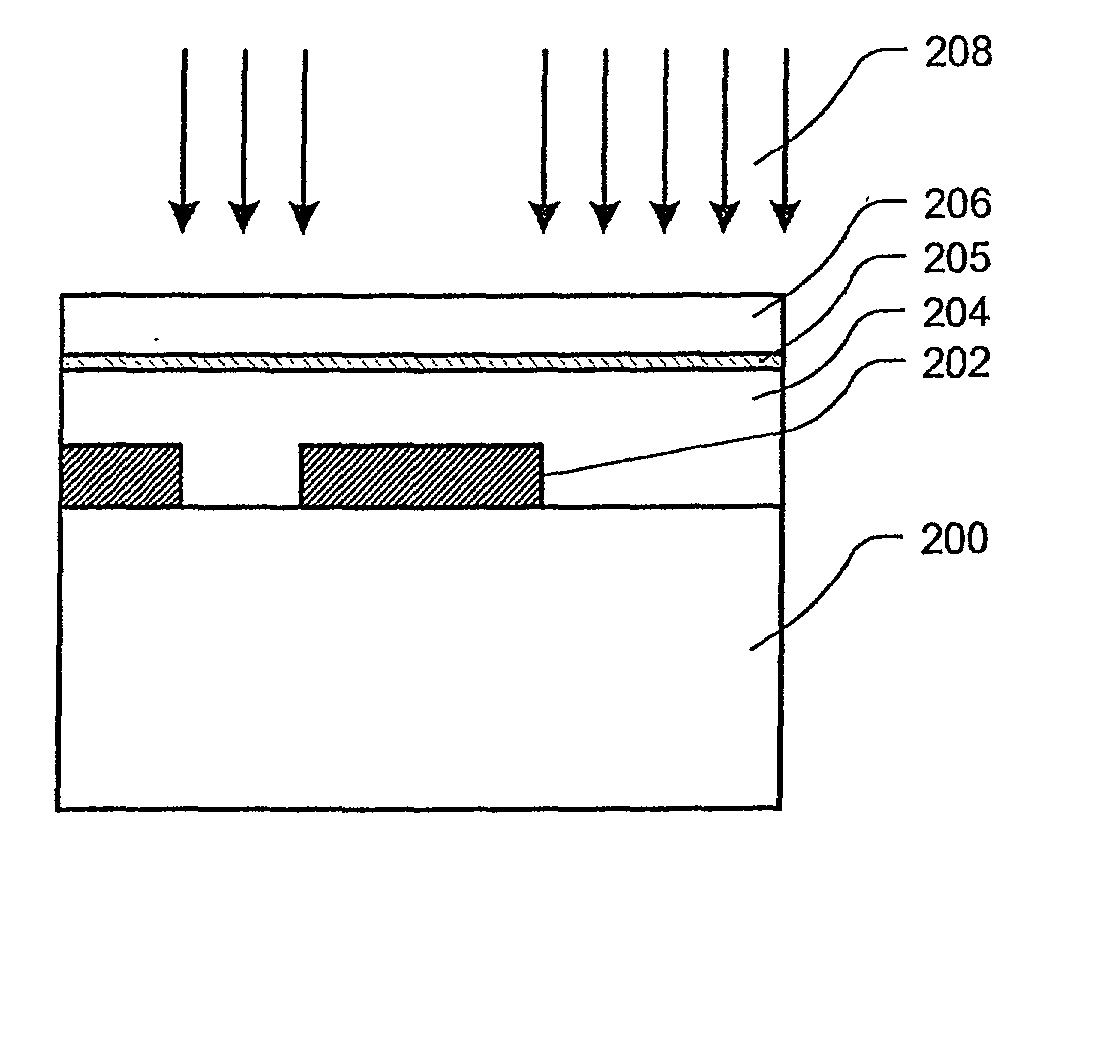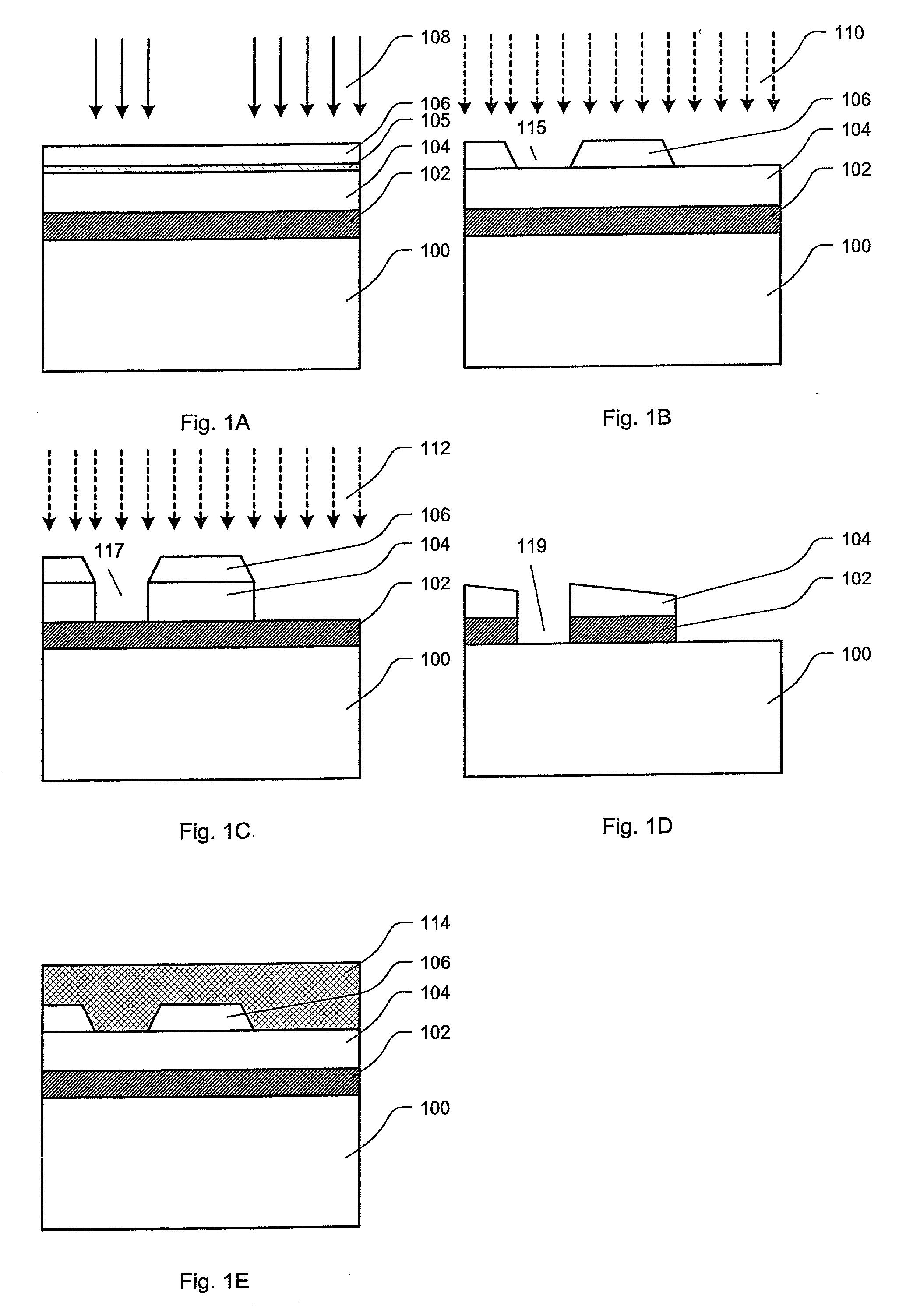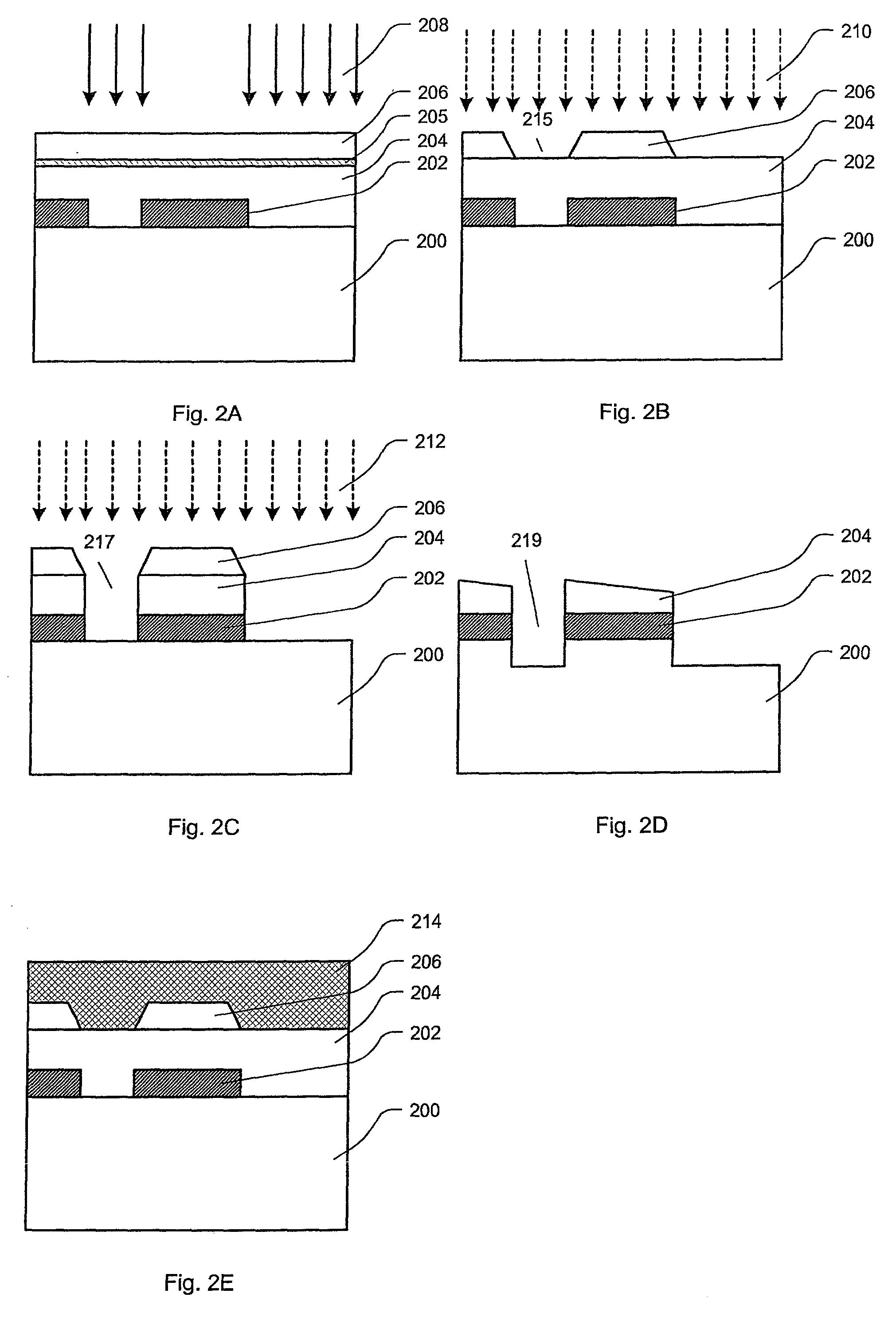However, the difference in criticality is much less than might be expected and will in the near future disappear.
It has been observed that nonlinearities in transfer of a pattern from a reticle to a
wafer magnify any size errors in the
mask.
At the same time, the
mask error enhancement factor is likely to increase due to more aggressive lithographic process trade-offs, such as tuning the lithographic process to optimize the manufacture of contact holes, transistors or other critical features in order to use feature sizes closer to the theoretical resolution limit.
The requirements in pattern generators for patterning of reticles are so different than in steppers that chemically amplified resists are unsuitable for patterning reticles.
Work to modify conventional Novolac-DNQ resist to produce a resist suitable for DUV
exposure of
mask patterns reportedly has failed.
Uniformity and feature size requirements have become so demanding that wet
etching no longer is suitable.
Wet
etching is generally not useable when the size of features approach the thickness of the films the features are etched from.
It is difficult to compensate for this deviation by changing the data or the
dose.
No non-amplified resist formulation is known which combines good contrast with high transparency.
The uniformity of resist
erosion is difficult to control since, among other things, it depends on the pattern to be etched.
This
erosion problem is exacerbated by the high optical absorption of non-chemically amplified resists used with DUV
radiation.
Resist sidewall deviation from 90.degree. vertical inevitably limits the line resolution.
Using current
chemistry it is not possible to make the resist thinner than 0.4 -0.5 microns and still protect the chrome during the
dry etching.
If the line at the top of the resist layer is narrowed, the wall angle less favorable or the resist thicker, the line would tend to vanish.
Obviously, each of the problems described gets worse as line widths get smaller, tolerances diminish, and the
wavelength move into the deep
ultraviolet.
The use of chemically amplified resists introduces other problems.
Use of chemically amplified resists on reticles is much more difficult than on wafers, due to the thickness and shape of reticles.
Reticles are much thicker and less thermally conductive than
silicon wafers, making it more difficult to control the baking sequence accurately.
Furthermore, reticles are square, leading to corner effects that are not experienced with round wafers.
These post-
exposure bake problems are not necessarily limited to chemically amplified resists, but are particularly had for chemically amplified resists due to the criticality of the baking step.
Non-chemically amplified resists are sometimes baked after
exposure to even out
standing wave interference effects, leading to the same problems.
Post-exposure baking also introduces a
latent image diffusion problem, for both kinds of resist, but worse for the chemically amplified resists since the deactivation post bake often requires a substantially different temperature than that optimized for
standing wave reduction.
This makes the
current generation of chemically amplified resists unsuitable for use in a mask writer, which may take one to ten hours or more to write a mask and typically operates without an automated
processing line.
The related problem is that the time from prebaked to post bake depends on the pattern written and is highly variable.
All single layer resists share properties that makes them less suitable in the foreseeable future.
As features get very small, wet developed resist structures assume an unfavorable
aspect ratio.
The thin resist layer needs to be transparent to be exposed from top to bottom, but the transparency makes it subject to optical interference that lowers the effective performance of the resist and increases
process variability.
The
standing wave effect results from interference within the resist layer between light directed toward the reticle's surface and light reflected back.
With certain thicknesses of resist, there is destructive interference between the light entering and leaving the resist, allowing a maximum number of photons to stay in the resist layer, producing high sensitivity.
Variations in the resist bulk or thickness effect the sensitivity of the film and lead to non uniformity is in the pattern produced.
These problems are common to ordinary and chemically amplified resists.
Mask production faces additional issues.
 Login to View More
Login to View More  Login to View More
Login to View More 









